What is Visual Sensory Stimulation?
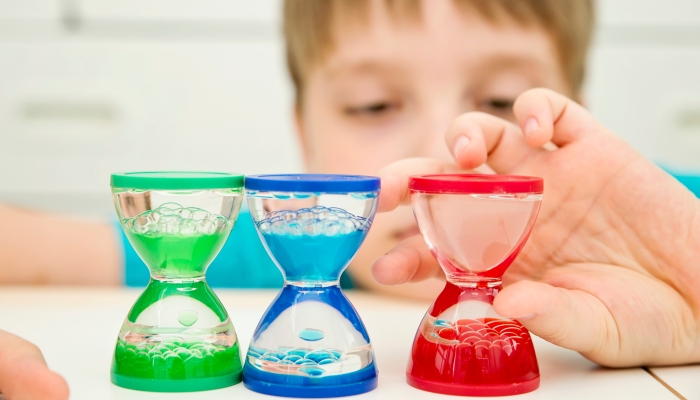
This post may contain affiliate links; please see our terms of use for details.
- The visual system is responsible for processing data gathered by the eyes.
- All people can benefit from appropriate visual stimulation.
- Children and adults can activate and develop their visual sensory system in many ways.
Have you ever wondered how our bodies process visual input to create the sense called vision? It’s a fascinating process.
When our eyes perceive light, photoreceptor (light-sensing) cells in the retina convert this into an electrical signal and send it to the brain via the optic nerve. The brain then flips the upside-down image sent by the retina, processes the data, and makes meaning of the visual stimuli and sensory information—all within fractions of a second.
Because healthy visual perception is an important part of all well-functioning sensory systems, you may wonder if there are specific, sight-targeted activities you or your child can do to help increase visual processing abilities.
Through visual sensory stimulation, children and adults can use a variety of sensory activities to develop their body’s natural abilities.
Read on to learn more about the visual sensory system and ways to keep your sense of sight healthy, regardless of age.
Understanding Visual Sensory Stimulation
Let’s briefly review the body processes that allow vision to occur to better understand the sense of sight.
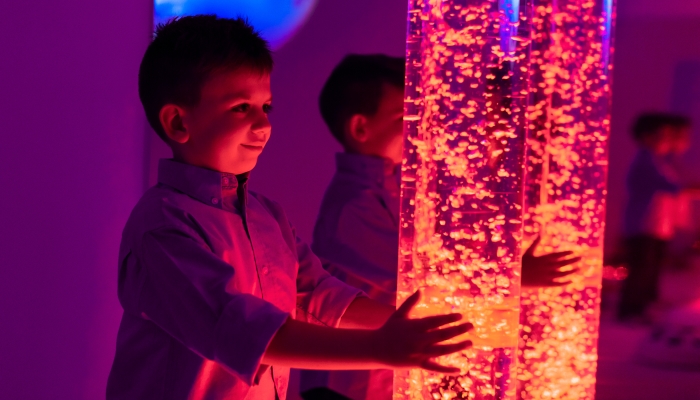
What is Visual Sensory Stimulation?
The body’s visual system is responsible for processing all visual input received by the eyes and sending that data via an electrical and chemical signal to the brain: This includes light brightness, depth perception, and visual information from observing the world around us.
In simple terms, visual sensory stimulation refers to the fact that when visual information (like light) is presented to the eyes, the chemical signals that result from that sense being activated (or stimulated) tell the brain to respond to what it’s seeing.
This process describes the use of materials or objects to help learning occur in the brain, which can then affect a variety of other senses and body systems.
While all the body’s sensory systems work together to help us function in the world around us, sensory activities that target the visual system benefit far more than just the eyes.
Importance in Development
Encouraging a healthy sensory diet that stimulates all the senses, including that of the visual sensory system, is important for people of all ages.
In babies and young children, providing appropriate visual stimulation through sensory play helps infants develop the eye-muscle coordination of tracking movements. Visual activities like looking at high-contrast picture books or playing with blocks can encourage color recognition and build depth perception.
Adults need engagement of their visual sensory system too. A 2020 study11. Assed, M. M., Rocca, C. C., Garcia, Y. M., Khafif, T. C., Belizario, G. O., Toschi-Dias, E., & Serafim, A. de.. Memory training combined with 3D visuospatial stimulus improves cognitive performance in the elderly: Pilot study.. Dementia & Neuropsychologia. 2020;14(3), 290–299. https://doi.org/10.1590/1980-57642020dn14-030010 by Assad et al showed that older adults experienced positive cognitive changes in attention, reaction time, information processing speed, and working memory through memory training with 3D objects.
Benefits of Visual Sensory Stimulation
Need more reasons to engage in activities that target your visual system? Consider benefits such as:
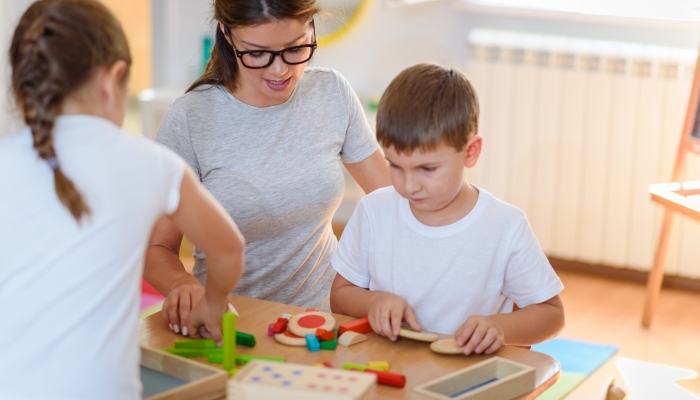
Cognitive Development
In addition to improving focus and other mental abilities, age-appropriate visual stimulation offers a wide range of cognitive advantages.
Play that includes a variety of sensory inputs is important for children of all ages.
A 2018 study22. Yogman, M., Garner, A., Hutchinson, J., Hirsh-Pasek, K., Golinkoff, R. M., Baum, R., Gambon, T., Lavin, A., Mattson, G., Wissow, L., Hill, D. L., Ameenuddin, N., Chassiakos, Y. (Linda), Cross, C., Boyd, R., Mendelson, R., Moreno, M. A., Radesky, J., Swanson, W. S., … Smith, J.. The Power of Play: A Pediatric Role in Enhancing Development in Young Children. Pediatrics. 2018;142(3). https://doi.org/10.1542/peds.2018-2058 by Dr. Michael Yogman shows that free, unstructured play helps children develop problem-solving skills, improve spatial understanding, grow executive functioning abilities, and increase language skills. Many social skills that will be used throughout a child’s life are also learned through play.
Did you know that environmental enrichment33. Figuracion, K. C., & Lewis, F. M.. Environmental enrichment: A concept analysis. Nursing Forum. 2021;56(3), 703–709. https://doi.org/10.1111/nuf.12565, such as spaces that engage movement, mental, social, and sensory processing abilities, can change your brain for the better?
In 2009, researchers published a study44. Sale, A., Berardi, N., & Maffei, L.. Enrich the environment to empower the brain. Trends in Neurosciences. 2009;32(4), 233–239. https://doi.org/10.1016/j.tins.2008.12.004 that describes how environmental enrichment helps develop the visual system and maintain flexibility in the primary visual cortex (the area of the brain that is responsible for processing visual input from the retinas).
Further findings from this study suggest that environmental enrichment may be a promising way to treat brain changes associated with age and help restore regular sensory function from a variety of disorders.
Emotional and Psychological Well-being
Visual sensory benefits extend beyond increased cognitive abilities: They can also improve our psychological health.
Participants in a 2019 study55. Jo, H., Song, C., & Miyazaki, Y.. Physiological Benefits of Viewing Nature: A Systematic Review of Indoor Experiments. International Journal of Environmental Research and Public Health. 2019;16(23), 4739. https://doi.org/10.3390/ijerph16234739 also showed improvement in symptoms of stress and anxiety when study participants were shown images of natural landscapes and scenery.
A well-rounded sensory diet that includes visual stimulation has been proven66. Canbeyli, R.. Sensory stimulation via the visual, auditory, olfactory and gustatory systems can modulate mood and depression. European Journal of Neuroscience. 2021;55(1), 244–263. https://doi.org/10.1111/ejn.15507 to enhance a person’s mood and reduce symptoms of depression. Interestingly, the same study also showed that depression impacted an individual’s ability to respond to a variety of sensory information, including vision, auditory abilities, and taste.
Many researchers feel that future treatment strategies for a variety of emotional and psychological conditions will involve therapies that target a person’s senses, including directed visual input.
Techniques and Tools for Visual Sensory Stimulation
Now that we’ve established the importance of activating the visual sensory system in individuals of all ages, what are some practical strategies to provide these experiences?
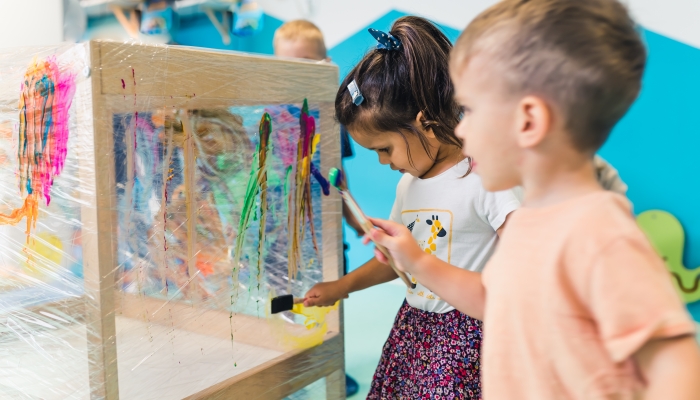
For Infants and Young Children
There’s a wide range of visual activities available to encourage the growing mind of a child. Best of all, they don’t have to be expensive or elaborate to be effective!
Consider ideas like:
- Mobiles with bright colors and interesting shapes (For safety’s sake, make sure they’re well out of your baby’s reach.)
- Colorful toys with varied patterns like stripes or polka dots
- Spinning tops—some also include patterns
- Nature-based visual tools, like these aquariums
- Light-up toys
- Mirrors, especially ones that offer a combination of sensory experiences, like these that combine tactile and visual learning opportunities
- High-contrast pictures, drawings, or images (These are particularly helpful for very young infants.)
- REALISTIC AND VIBRANT: This aquarium lamp features a beautiful, moving picture of tropical fish that looks incredibly realistic. Use It to create a tranquil, peaceful, and soothing atmosphere anywhere your home.
- HASSLE-FREE MAINTENANCE: This lamp is extremely easy to care for. Simply plug it in and enjoy the stunning visual effects without worrying about water filtration, feeding, or other upkeep. No water needed.
- VERSATILE AND CONVENIENT: It is lightweight and portable, making it easy to move from room to room.
- ENHANCES ANY ROOM DECOR: Whether you’re looking for a unique night light for your child’s bedroom or want to add a touch of tranquility to your living room, this decorative aquarium lamp is the perfect choice. Its sleek and modern design complements any style of decor and creates a stunning focal point in any space.
To keep your child engaged and entertained as they learn, switch out sensory toys regularly and watch for your little one’s signals like fussiness or avoidance as a cue to end the play session.
- Meaningful & Fun Newborn Toys By ZICOTO: Watch your baby evolve day by day – truly heartwarming! The adorable soft baby book is designed for 2 developmental stages – crinkle filling, sensory textures & fun activities make for an absolute favorite among infant toys
- Precious For Tummy Time Practice: Stage 1 of the 7.5×5.9” activity book engages & entertains your baby at 0+ month! The baby toys’ high contrast colors stimulate & aid visual development, while the safe mirror helps them to look at themselves & track movements. Perfect learning high contrast baby book toy.
- Promotes Motor Skills Effectively: Rich colors, various textures, 3D activities, a BPA free soft teether & a play pocket bring in more interaction, to support the development of a better sense of touch & other fine motor skills – montessori book stage 2 (3+ m)
- Top-Notch Flip Over Concept: Fully enjoy your peace of mind as the soft baby book is made of premium materials with a baby safe design! The book stands stable by itself, cleverly encouraging your baby to learn to hold their head up & explore their surroundings
For Adults
One of the challenges for adults seeking visual sensory stimulation is to look beyond the opportunities offered by technology or their smartphones. While these activities may be engaging, researchers77. Kahn, P. H., Severson, R. L., & Ruckert, J. H.. The Human Relation With Nature and Technological Nature. Current Directions in Psychological Science. 2009;18(1), 37–42. https://doi.org/10.1111/j.1467-8721.2009.01602.x feel they tend to provide less sensory stimulation than what occurs when a person interacts with a real environment and that “real nature” is preferable to “technological nature.”
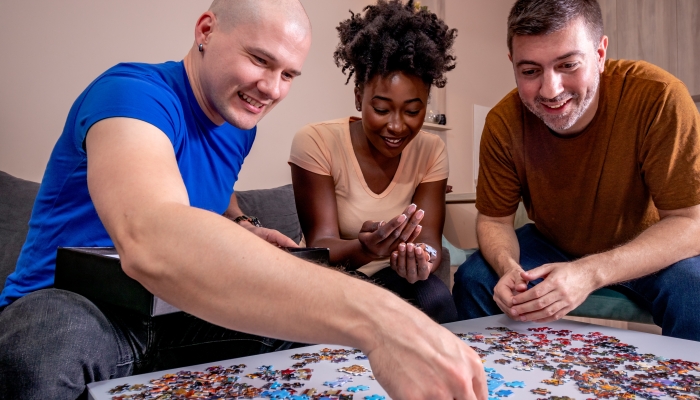
When seeking visual experiences for adults88. Schmid, J.. VISUAL STIMULATION FOR ALZHEIMER’S AND DEMENTIA. Best Alzheimer’s Products. 2009. https://best-alzheimers-products.com/alternative-therapy-for-alzheimers/sensory-stimulation-for-alzheimers/visual-stimulation-for-alzheimers#:~:text=Gently%20animated%20lights%2C%20kaleidoscopes%2C%20colorful,all%20examples%20of%20visual%20stimulation., consider options like:
- Visual puzzles and games (Optical illusions can be a great source of fun!)
- Nature-based activities like walking in the woods, watching a sunset, or visiting the beach
- Creating or viewing visual art like paintings or sculptures
- Watching fish swim in an aquarium or nature movies
- Kaleidoscopes
Like visual stimulation experiences with children, adults don’t need to have expensive or elaborate strategies to experience the benefits of activating the visual system. Often, simple experiences can be the most beneficial.
Altered Sensory Stimulation
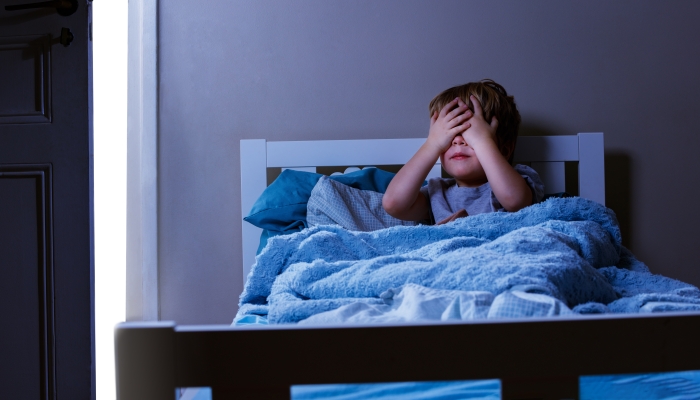
As your child grows through infancy and beyond, you may notice that they experience altered ways of interacting with their environment—which can include sensory processing disorder.
Children and adults may experience sensory input needs that result from an underactive (hypoactive) or overactive (hyperreactive) response to certain substances or sensations.
Generally speaking, those with an underactive sensory processing disorder will seek out experiences to gain the input they need to experience regulation. Those with more reactive symptoms of sensory processing disorder will avoid or act out when exposed to their triggers.
Signs of Sensory Processing Problems
According to experts at the Child Mind Institute99. Arky, B.. Sensory Processing Issues Explained. Child Mind Institute. 2023. https://childmind.org/article/sensory-processing-issues-explained/, here’s what difficulties may look like in the five main sensory systems, as well as two other significant systems.
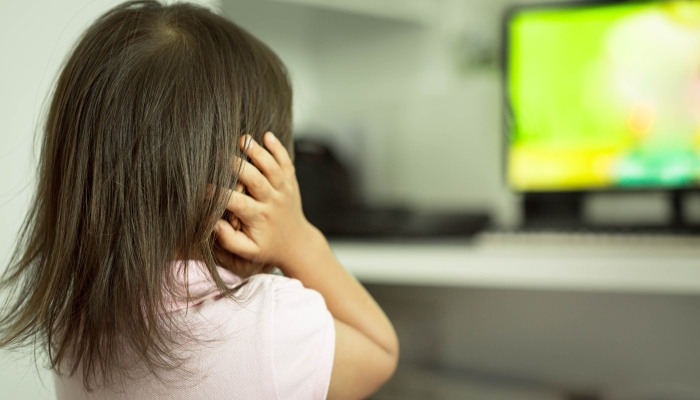
| Sensory system | Body part involved | Signs and symptoms can include: |
| Visual system (vision) | Eyes | Preference for dim lighting instead of bright lights, trouble seeing shapes or objects, difficulties with focus or depth perception, color blindness, etc. |
| Auditory system (hearing) | Ears | Aversion to loud noises, difficulty hearing sounds in the environment or over-awareness of sounds (like mosquitos), difficulty regulating the volume of voice, etc. |
| Tactile system (touch) | Skin receptors | Extreme reactions to experiences like haircuts, reluctance to wear certain fabrics or have tags on clothes, and avoidance of walking on surfaces like grass or sand. |
| Olfactory system (smell) | Nose | May have a very strong sense of smell or limited sense of smell, may refuse to be in the same room with those who are eating foods they find unpleasant, and may have extreme reactions to plants, flowers, or scented laundry soaps. |
| Gustatory system (taste) | Taste buds, tongue | May be very sensitive to the way food tastes or feels in the mouth or on the tongue, and may be hyper aware of food texture. |
| Proprioception (awareness of where one’s body is in space in relation to other objects and how to move) | Joints/ligaments | May appear clumsy and not understand where their body is in relation to objects around them, and may crave deep pressure from tight hugs or weighted blankets. |
| Vestibular system (awareness of where one’s body is in space related to movement and head position; key elements of balance and coordination) | Inner ear | May also appear clumsy and have difficulty with activities that require balance like riding a bike or balancing on one foot. |
Because parents generally know their children best, their perspective is important when considering a diagnosis of sensory processing disorder. Talk with your child’s healthcare provider if you have concerns about the way your child moves or interacts with their environment.
Appropriate sensory input, including visual stimulation, is an important part of developing and maintaining visual processing abilities. Engaging with your child through play and exploring the world together is a simple, yet powerful way to grow together through shared experiences.
References
- Assed, M. M., Rocca, C. C., Garcia, Y. M., Khafif, T. C., Belizario, G. O., Toschi-Dias, E., & Serafim, A. de. (2020). Memory training combined with 3D visuospatial stimulus improves cognitive performance in the elderly: Pilot study. Dementia & Neuropsychologia, 14(3), 290–299. https://doi.org/10.1590/1980-57642020dn14-030010
- Yogman, M., Garner, A., Hutchinson, J., Hirsh-Pasek, K., Golinkoff, R. M., Baum, R., Gambon, T., Lavin, A., Mattson, G., Wissow, L., Hill, D. L., Ameenuddin, N., Chassiakos, Y. (Linda), Cross, C., Boyd, R., Mendelson, R., Moreno, M. A., Radesky, J., Swanson, W. S., … Smith, J. (2018). The Power of Play: A Pediatric Role in Enhancing Development in Young Children. Pediatrics, 142(3). https://doi.org/10.1542/peds.2018-2058
- Figuracion, K. C., & Lewis, F. M. (2021). Environmental enrichment: A concept analysis. Nursing Forum, 56(3), 703–709. https://doi.org/10.1111/nuf.12565
- Sale, A., Berardi, N., & Maffei, L. (2009). Enrich the environment to empower the brain. Trends in Neurosciences, 32(4), 233–239. https://doi.org/10.1016/j.tins.2008.12.004
- Jo, H., Song, C., & Miyazaki, Y. (2019). Physiological Benefits of Viewing Nature: A Systematic Review of Indoor Experiments. International Journal of Environmental Research and Public Health, 16(23), 4739. https://doi.org/10.3390/ijerph16234739
- Canbeyli, R. (2021). Sensory stimulation via the visual, auditory, olfactory and gustatory systems can modulate mood and depression. European Journal of Neuroscience, 55(1), 244–263. https://doi.org/10.1111/ejn.15507
- Kahn, P. H., Severson, R. L., & Ruckert, J. H. (2009). The Human Relation With Nature and Technological Nature. Current Directions in Psychological Science, 18(1), 37–42. https://doi.org/10.1111/j.1467-8721.2009.01602.x
- Schmid, J. (2009, October 22). VISUAL STIMULATION FOR ALZHEIMER’S AND DEMENTIA. Best Alzheimer’s Products. https://best-alzheimers-products.com/alternative-therapy-for-alzheimers/sensory-stimulation-for-alzheimers/visual-stimulation-for-alzheimers#:~:text=Gently%20animated%20lights%2C%20kaleidoscopes%2C%20colorful,all%20examples%20of%20visual%20stimulation.
- Arky, B. (2023, October 30). Sensory Processing Issues Explained. Child Mind Institute. https://childmind.org/article/sensory-processing-issues-explained
- Berger, S. (2022, April 18). Activities to Address Tactile Defensiveness. NAPA Center. https://napacenter.org/tactile-defensiveness
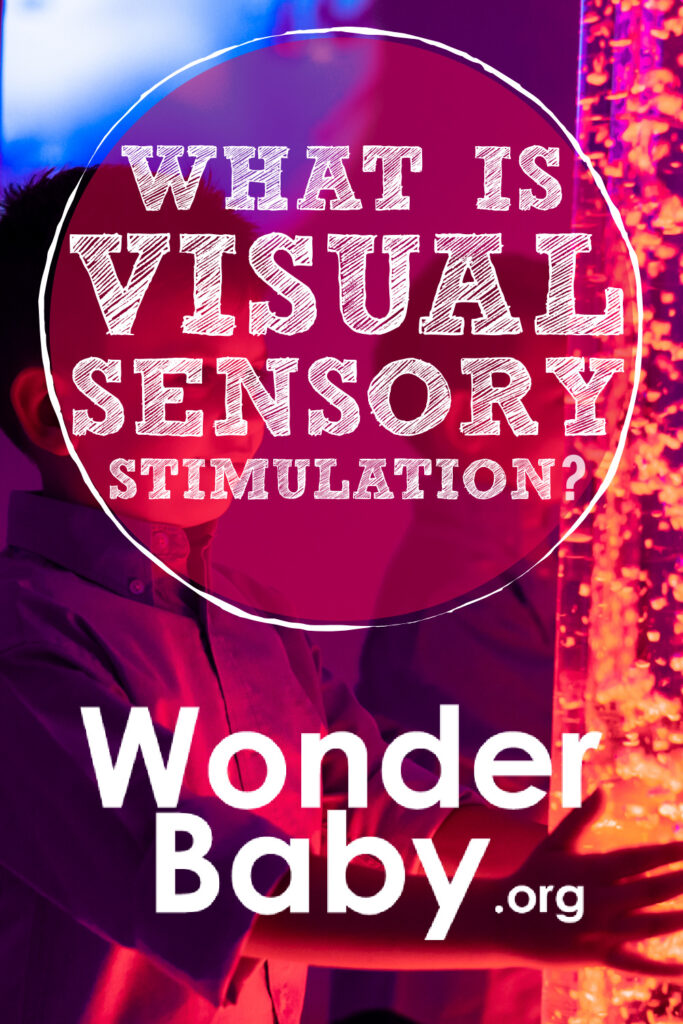
The information WonderBaby provides is not intended to be, and does not constitute, medical or other health advice or diagnosis and should not be used as such. Always consult with a qualified medical professional about your specific circumstances.
Related Posts

Visual Impairment
The Gift of Understanding: How a Young Child Helps His Blind Father Navigate Life
When a parent is blind, it’s natural for people to wonder how their sighted child will adapt. Will they struggle to understand their parent’s needs? Will they feel burdened by...

Braille and Literacy, Toys, Visual Impairment
24 Braille Toys for Kids Who are Blind
Everything from alphabet blocks to raised line coloring pages and activity books to puzzles to card and board games... and so much more! And it's all in braille ready for...

Tactile Arts and Crafts, Visual Impairment
Using Origami to Teach Blind and Low-Vision Students Basic Shapes
If, like me, you have wondered why it is important for young students to learn about shapes, here are just a few reasons. Teaching shapes in early education provides children...

